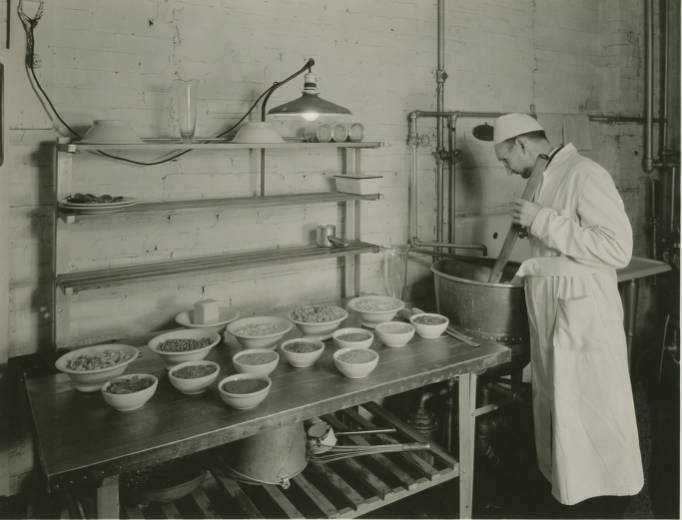A nationally known experiment in industrial democracy, the Columbia Conserve Company, located in at 1735 Churchman Avenue (at the ), canned a variety of soups and related items from 1903 until it was sold in 1953. Under the leadership of , who served as Columbia president throughout its history, the company in 1917 launched an experiment in workplace democracy that was to last a quarter of a century and achieved both national and international recognition.

Workplace democracy at Columbia was based on three innovations: (1) a workers’ council; (2) a profit-sharing plan; and (3) a stock-purchase plan designed to bring about employee ownership and legal control of the company. The council made decisions on virtually all policy and operational matters, such as the selection of supervisory staff, the number of hours worked, salary scales, and physical plant. It alone had the authority to discipline or discharge an employee. Council participation was eventually opened to all workers and decisions were arrived at through discussion, debate, and a majority vote at regular weekly meetings.
In 1925, a contract between stockholders and workers called for all profit after stockholders’ dividends to be used to purchase common stock that would be held collectively by workers in a trust. As of 1930, 51 percent of common stock was owned collectively by workers who, accordingly, had legal control of the company. Workers owned 63 percent of common stock by 1937, making Columbia one of the earliest producer cooperatives in the nation. In addition to a guaranteed annual salary, the list of workers’ benefits at Columbia was impressive: free health care (including optometry and dentistry) for workers and dependents, a three-week paid vacation, an old age and disability pension, and educational benefits.

Although the caused difficult times for Columbia in the 1930s, no employees were laid off. Instead, all workers accepted substantial pay cuts. By 1942, however, worker discontent resulted in a strike against the company. Late that same year, workers sued for receivership against Columbia and its management staff, while trustees of the collectively held stock filed a countersuit to dissolve the trust. The Marion County Superior Court found in favor of the company in 1943 and ordered that the trust be dissolved and that stock be distributed to individual workers, thus ending the Columbia experiment in workplace democracy. In 1953, the company was sold to John Sexton and Company of Chicago.

Help improve this entry
Contribute information, offer corrections, suggest images.
You can also recommend new entries related to this topic.